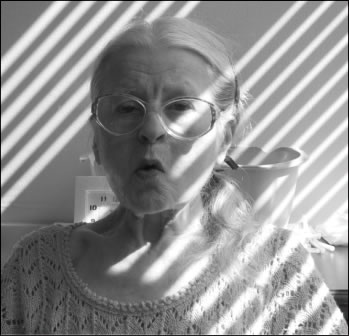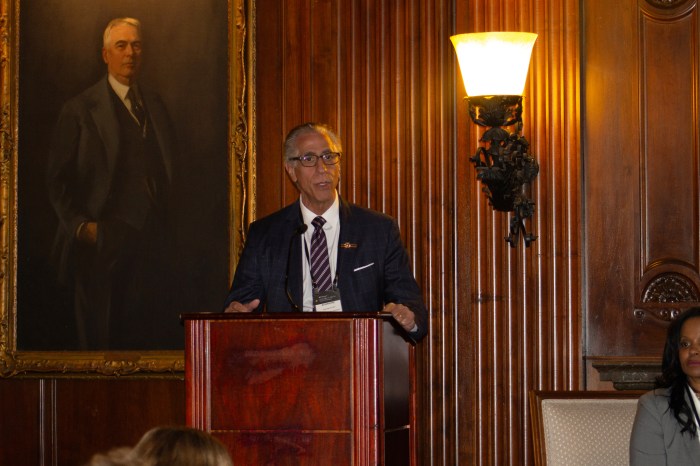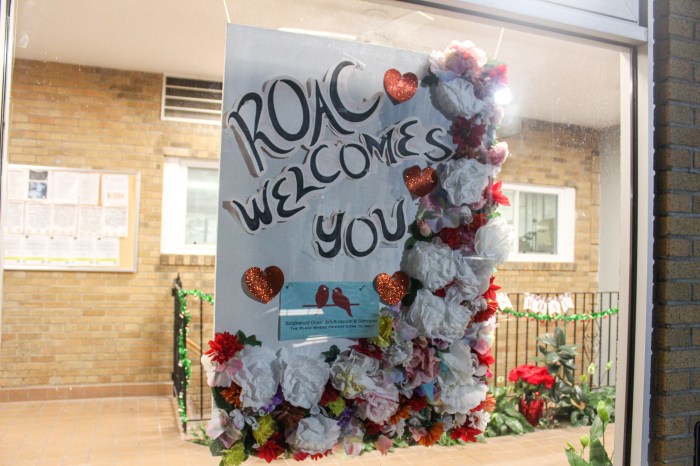BY Terese Loeb Kreuzer
Sonia Reich will be 80 years old on April 1. She lives in a nursing home in Northbrook, Ill., where she says that she is wearing a Star of David and that the doctors and nurses are trying to poison her. She refuses to sleep in a bed. She spends her nights dozing in a chair.
On April 7, a film about this frail but implacable woman will receive its New York premiere at the Museum of Jewish Heritage in Battery Park City. “Prisoner of Her Past” is about Sonia Reich but it is also about late-onset post-traumatic stress disorder — a terrifying, debilitating and often-misdiagnosed illness that can grip anyone who has been traumatized. The Museum of Jewish Heritage is offering free admission to the film in the belief that there are many people in Lower Manhattan who suffer from post-traumatic stress because of 9/11 and who could benefit from hearing Sonia Reich’s story and listening to the panel discussion afterward.
As Sonia’s son, Howard, jazz critic for the Chicago Tribune, tells her story, the path that led to the nursing home began on a cold night in February 2001 when Sonia packed some clothes into two shopping bags and fled from her home in Skokie, Ill. She said that someone was trying to “put a bullet” in her head. She had to run away.
At first psychiatrists told Howard and his sister, Barbara, that their mother had “delusional disorder with auditory hallucinations.” Subsequently, the real diagnosis of late-onset post-traumatic stress disorder emerged.
Howard Reich first wrote about his mother in a long article for the Chicago Tribune that appeared in 2003. Then, in 2006, he published a book called “The First and Final Nightmare of Sonia Reich: A Son’s Memoir.” In 2004, he and several others started working on “Prisoner of Her Past,” which they finished late in 2009. In the course of his research, he found out who his mother was and what she had endured.
As the film recounts, Sonia Reich was born Bluma Sys in 1931 in a village called Dubno, then part of Poland, now in the Ukraine. Her early childhood was happy, playing with cousins in her grandfather’s spacious house where she and her divorced mother lived. Beginning in 1939 with the arrival of Soviet troops, this peaceful existence was shattered. By June of 1941, Dubno had become a battleground, with Soviets fighting Germans. On June 30, 1941, the Germans prevailed. They crammed the Jewish population into a ghetto and then systematically shot thousands of Jews and dumped them in mass graves. Sonia’s mother, who she never saw again, told her to escape from their house by jumping out a window. For several years, Bluma struggled to survive, hungry, frostbitten, covered with lice, witness to horror after horror. She was around 16 when the war ended and she was able to come to America. Though she married another Holocaust survivor and appeared to have a normal life, it turned out that she had never recovered.
Late-onset post-traumatic stress disorder is a “little-known mental illness,” Reich said in his Chicago Tribune article. “P.T.S.D. did not enter the psychiatric lexicon until 1980 and the delayed form that my mother had remains unknown to many physicians.”
Often, he said, “there’s a trigger, something that pushes someone across the line, and that’s what happened with my mother.”
The night that Sonia Reich fled from her home in Skokie was the 10th anniversary of her husband’s death. “On that anniversary I think she finally reached the breaking point of what she could bear without my father,” said Reich, “and I do believe that if my father were still alive, none of this would have happened.”
As psychologist H. Russell Searight wrote in a review of Reich’s book that appeared in a journal published by the American Psychological Association, “Many Holocaust victims have coped for years by relying on a ‘false self’ that may outwardly appear successful through work, friendships, long-term marriages and commitment to child rearing. Underneath this show of successful adaptation lie vulnerability, profound fear, apprehension and suspicion. With the diminished energy and physical health of later years, there are fewer internal resources to keep the turmoil of the trauma at bay, and painful memories become relived.”
Reich said that making “Prisoner of Her Past” has been a labor of love. He feels that it is a story he had to tell, hoping that it will help someone else.
“Trauma is not confined to one particular experience like a Holocaust or a war or whatever you might name,” he said. “Trauma has a really deep and lasting effect on people, more so than we understand, Studies have shown that there are physiological changes to the brain after experiencing trauma.”
He went on to say that, “The medical professionals believe that it’s better to treat trauma sooner than later. And if we don’t treat trauma, especially in children, as soon as possible after the trauma occurred, then 60 years afterward, people might relive the experience as my mother did. The bottom line here is getting help as soon as possible because trauma is real.”
“Prisoner of Her Past” will be shown at the Museum of Jewish Heritage, 36 Battery Place, at 6:30 p.m. on April 7. There will be a post-screening discussion with Howard Reich, producer and writer; Gordon Quinn, director; and Dr. Yuval Neria, director, Trauma and P.T.S.D. Program, Columbia University. The Museum is offering free admission with a suggested donation.


















